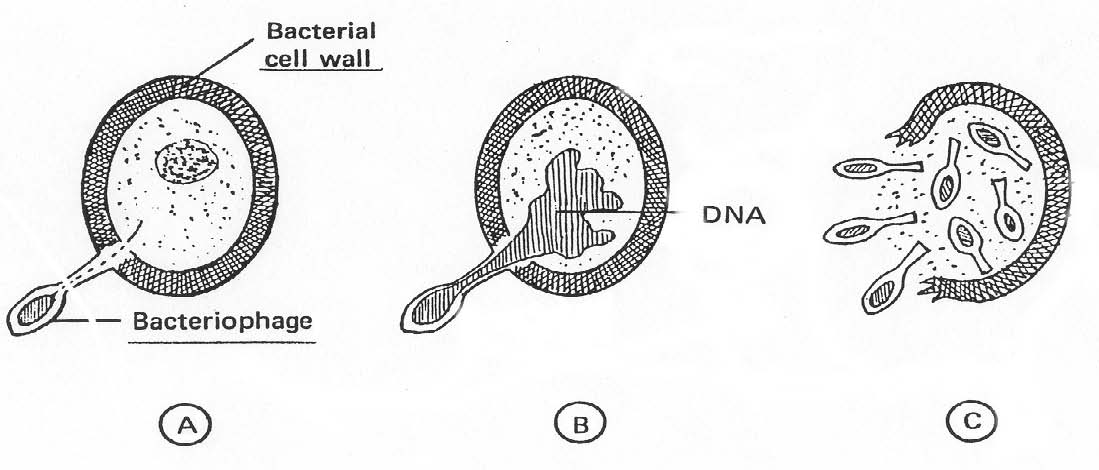Principles of Epidemiology and Microbiology
Lesson 2: Public Health Microbiology
Section III: Viruses
2-15
2-15. PATHOGENIC VIRUSES
Table 2-4 presents a list of the principal viral diseases of public health importance, grouped according to the physiological manifestations, the type of tissue attacked, or the similarity in the infective virus. These groupings are quite arbitrary, in that not all authorities classify these diseases in the same way.
Figure 2-8. Action of bacteriophage on a bacteria cell.
EXANTHEMATOUS (ERRUPTIVE) DISEASES
Smallpox (variola) Vaccinia (cowpox) Rubeolla (measles) Rubella (German measles) Herpes simplex (fever blisters, genital lesions) Herpes Zoster (Varicella-Zoster) (shingles) chickenpox Herpes Zoster Molluscum contagiosum (contagious warts)
DISEASES OF THE CENTRAL NERVOUS SYSTEM
Rhabdovirus (Rabies) (hydrophobia) Poliomyelitis (infantile paralysis) Mumps (epidemic parotitis) [sometimes classified as a respiratory disease] The encephalitides (see arthropod-borne viral diseases)
MISCELLANEOUS VIRAL DISEASES
Hepatitis A and B Epstein-Barr virus (Infectious mononucleosis) Human T-cell Leukemia Virus (AIDS) |
RESPIRATORY DISEASES
Rhinovirus and Respiratory Syncytial virus (common cold) Influenza Parainfluenza (croup in children) Viral pneumonias Adenoviruses Acute respiratory infections, eye infections
ARTHROPOD-BORNE VIRAL DISEASES
Yellow fever Equine encephalitis (a form of sleeping sickness) St. Louis encephalitis Japanese B encephalitis Russian spring-summer encephalitis Sandfly fever Dengue (breakbone fever) Colorado tick fever Epidemic hemorrhagic fever
ENTEROVIRUSES
ECHO viruses Cold-like ailments, Coxsackie viruses certain muscle pains |
Table 2-4. Common viral diseases.


